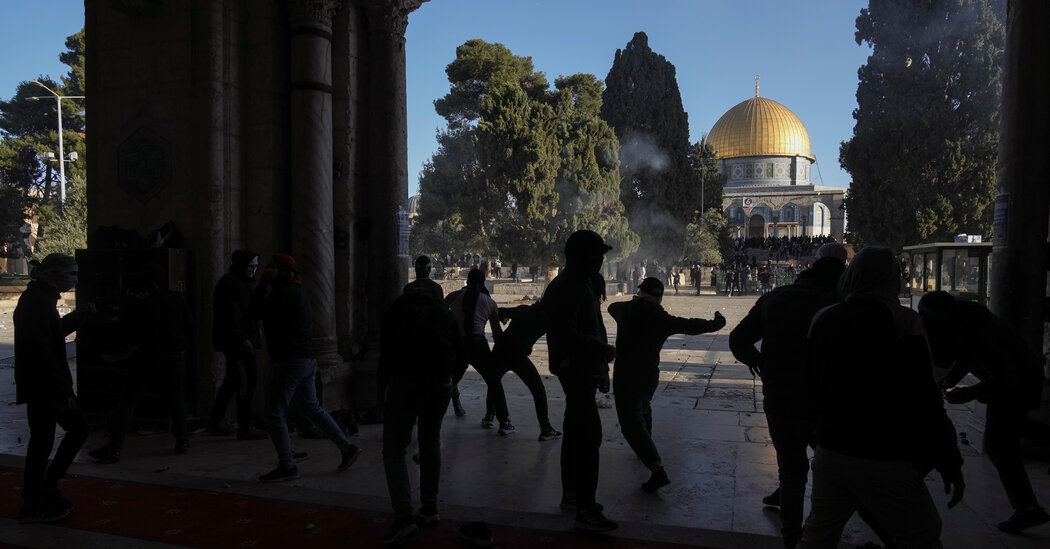JERUSALEM — Clashes between Israeli riot police and Palestinians erupted at one of the holiest sites in Jerusalem early on Friday, the first day of a rare convergence of Ramadan, Passover and Easter, culminating weeks of escalating violence in Israel and the occupied West Bank.
The clashes began at about 5:30 a.m. and lasted for more than three hours at the site, the Aqsa Mosque compound in the Old City, known to Jews as the Temple Mount — a complex that is sacred to both religions. Tens of thousands of Muslim worshipers were gathered there for dawn prayers on the second Friday of Ramadan, the holy month of fasting.
Palestinians threw stones at the police, who responded by firing sound grenades and rubber bullets. At least 117 Palestinians were injured, according to the Palestinian Red Crescent, and the Israeli police said that several officers had also been injured.
The violence ended after a few hours, but many more people were expected to pour into the Old City during the day for the weekly Friday Prayer and to celebrate Good Friday and the first night of Passover, which begins at sundown.
The confrontation raised the risk of further escalation following a recent wave of Palestinian attacks on Israelis and deadly Israeli raids in the occupied West Bank. Tensions and violence around the same compound played a central role in the buildup to an 11-day war last May between Israel and Palestinian militants in Gaza.
Over the past month, violence has escalated across Israel and the occupied territories with five Palestinian attacks that killed 14 people in Israel in an unusually deadly wave. That prompted the Israeli military to step up raids in the occupied West Bank that have left at least 15 Palestinians dead. Israel said that the raids were aimed at preventing and deterring further attacks, but Palestinians denounced them as a collective punishment.
The Israeli police and some Palestinian worshipers said that the clashes had been started by the Palestinians, while other witnesses said that the police had fired the first shot.
There have been expectations for weeks that tensions would rise surrounding the rare convergence of Ramadan, Passover and Easter.
In recent days, a hard-line Jewish group had said that it planned to mark Passover by slaughtering a young goat inside the Temple Mount, sacred to Jews as the site of an ancient Jewish temple.
Several of that group’s members were arrested by the Israeli police, but rumors spread on Palestinian social media that other hard-liners would breach the Aqsa Mosque this weekend, leading to calls for Palestinians to defend the building.
Adding to the tensions, twice in the past week, Palestinian vandals damaged a Jewish shrine in the occupied West Bank.
The Palestinian authorities strongly condemned the storming of the Aqsa compound by Israeli police.
“The expulsion of the worshipers by force, repression and batons in preparation for the incursions of the Jewish extremists will ignite the fire of the religious war for which the Palestinians alone will not pay the price,” the Palestinian foreign ministry said in a statement.
Yair Lapid, the Israeli foreign minister, said that his country was committed to freedom of worship for people of all faiths in Jerusalem.
“Our goal is to enable peaceful prayer for believers during the Ramadan holiday,” he said in a statement. “The riots this morning on the Temple Mount are unacceptable and go against the spirit of the religions we believe in.”
Check out our Latest News and Follow us at Facebook
Original Source
